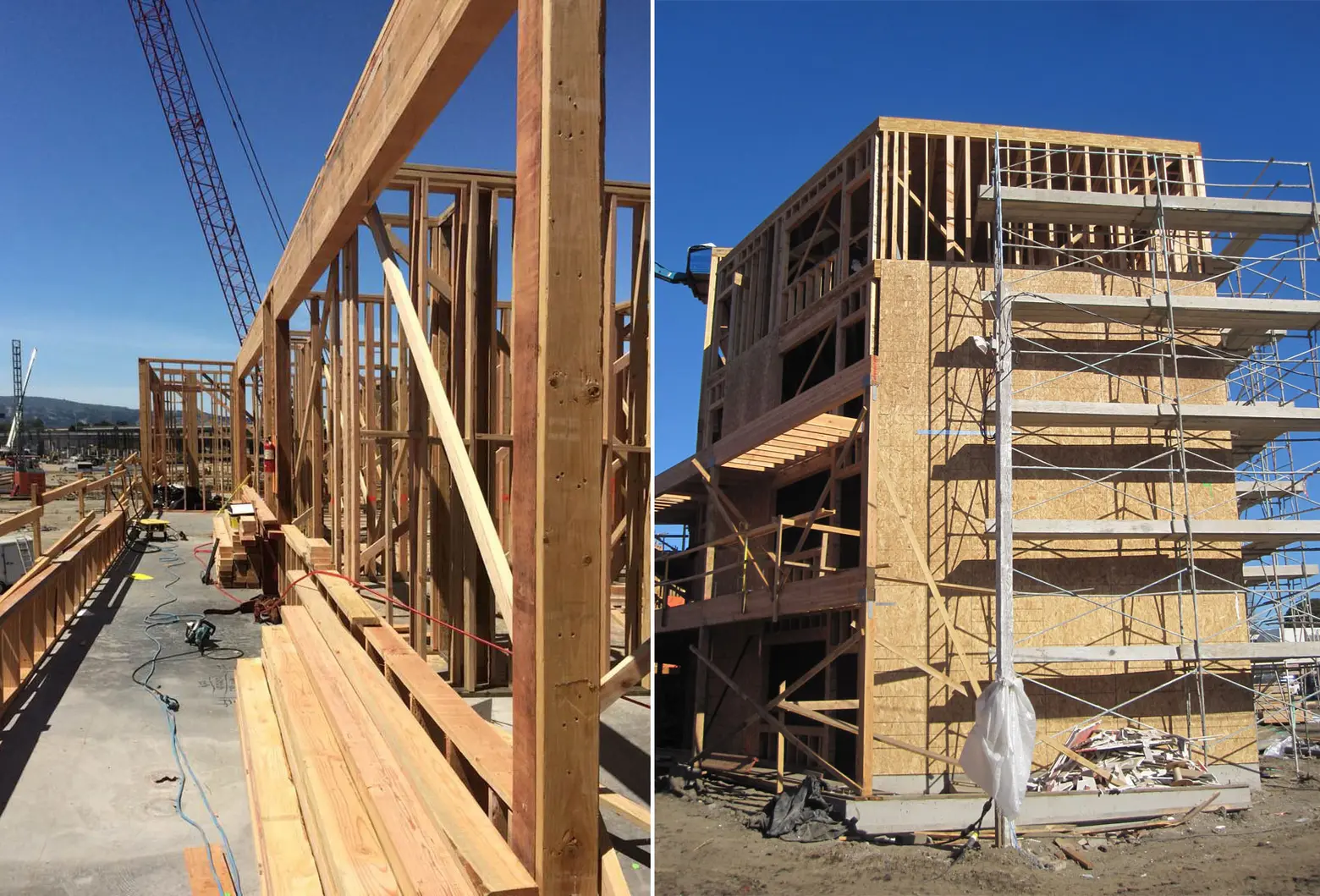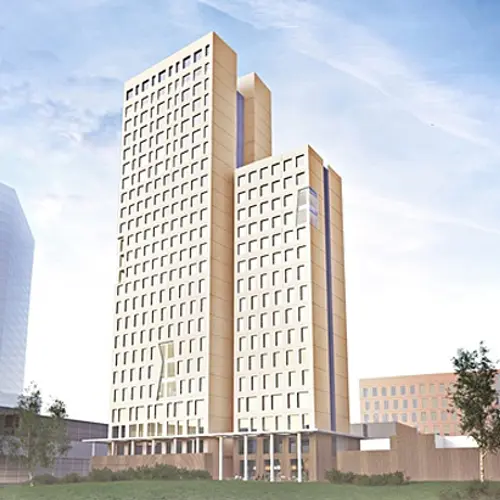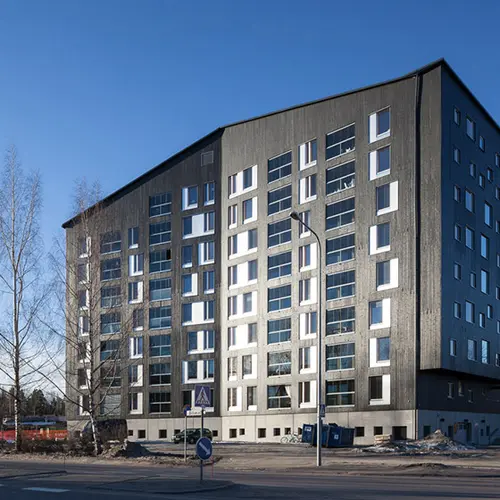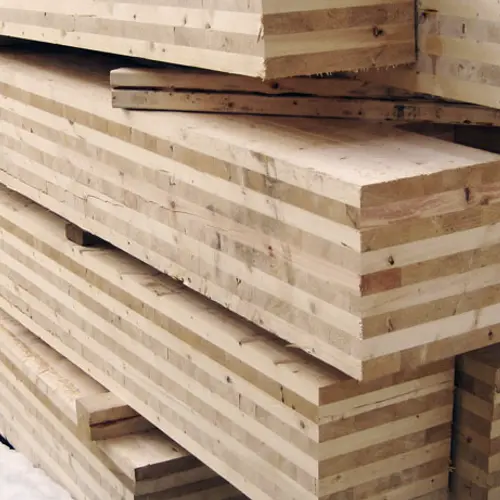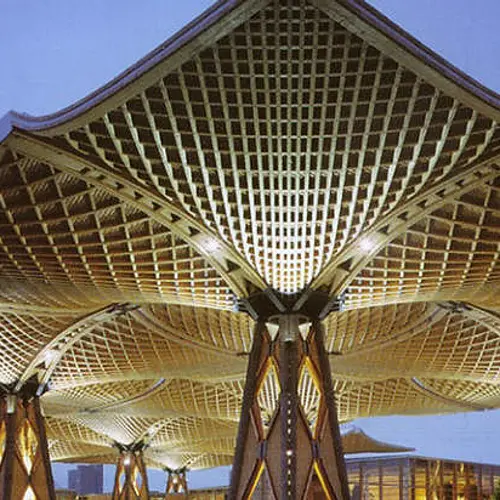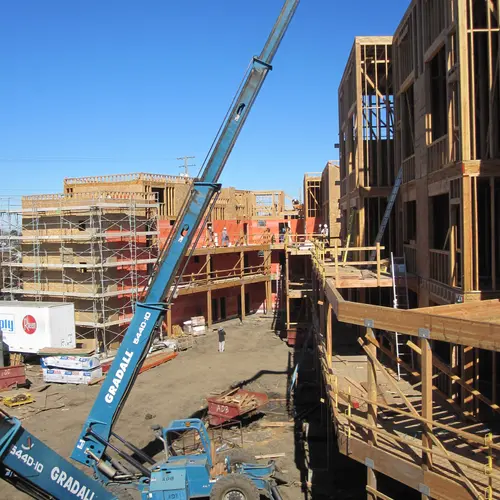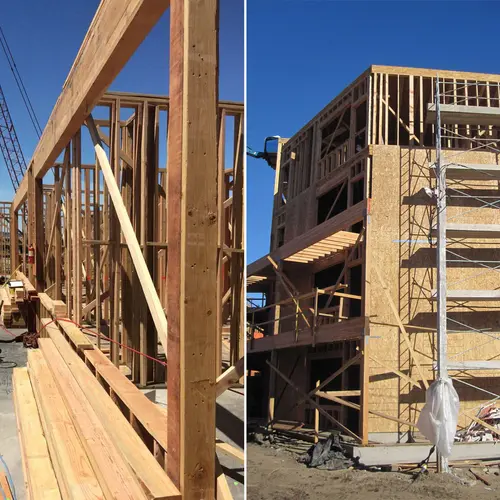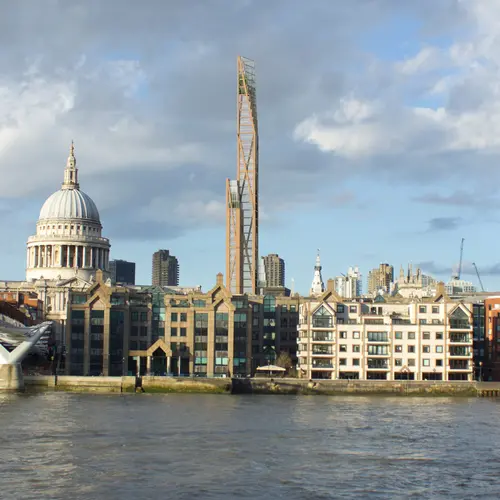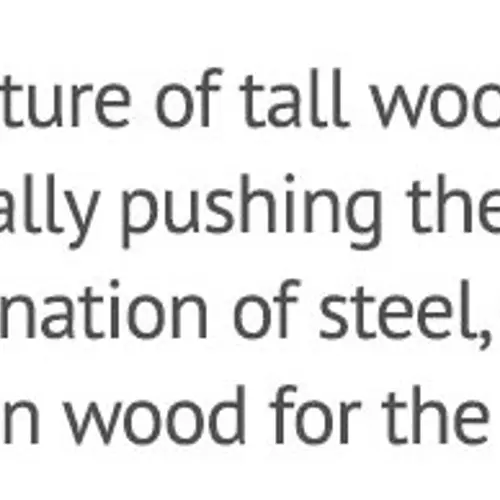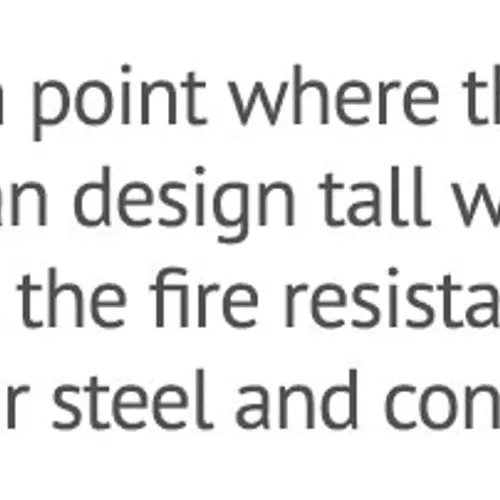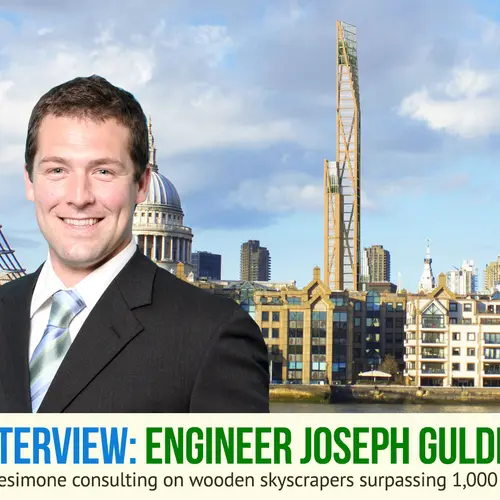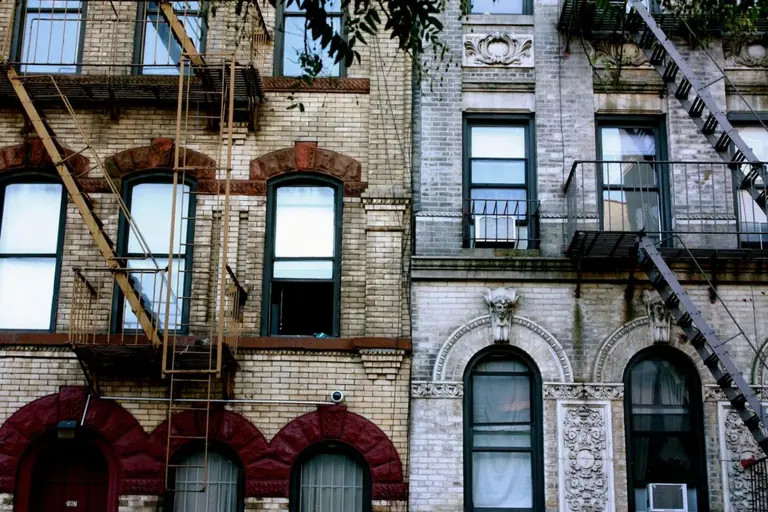Interview: Engineer Joseph Gulden Discusses Wooden Skyscrapers Surpassing 1,000 Feet
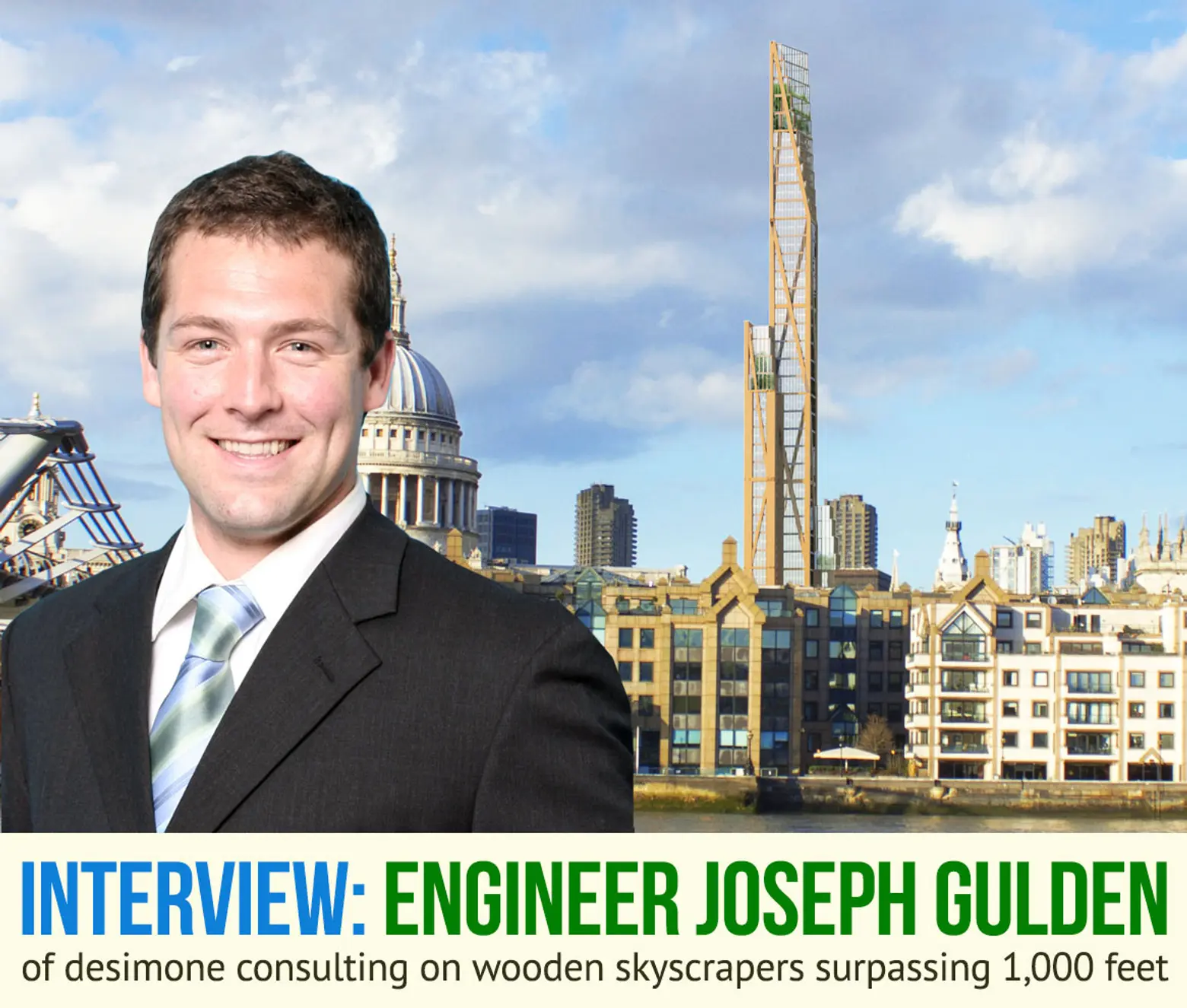
Could wood one day again be the material of choice for buildings? In response to rising construction costs and climate change, there’s been a resurgence of interest in wood construction, with some even saying that we’re in the beginnings of a “timber age.” Many architects, engineers and builders have started to embrace the material, having erected, or making plans to construct, high-rises that reach several hundred feet in the air. In fact, in April, one architecture firm proposed bringing a 1,000-foot timber tower to London’s Barbican. But is wood really a reliable alternative to concrete and steel? What about fire safety? And how tall can we really go at this point in time without compromising a building’s structural integrity?
To answer these questions and many more, 6sqft decided to pick the brain of DeSimone Project Manager Joseph Gulden. DeSimone is one of the world’s leading engineering firms with a roster of top NYC projects that include Zaha Hadid’s High Line project, 220 Central Park South and 45 East 22nd Street; Joseph himself is a licensed Professional Engineer (PE) as well as a licensed Structural Engineer (SE) with extensive experience constructing in regions with high seismic risk. He’s also worked on numerous high-rises and tall wood structures both in the U.S. and abroad.
Ahead Joseph discusses some of the challenges and advantages of building with wood, engineered timber, deforestation concerns, and if a wooden supertall will ever be in reach.
+++
How are wood skyscrapers superior to steel or concrete constructions?
Joseph: Material choice for a given project is an important decision that needs to be made early on in a project’s design. There are many factors to consider when choosing a material and historically, for tall buildings, this decision has been between steel and concrete. With the latest innovations in wood products, we’re approaching a point where we now have steel, concrete and wood in our tool chest for tall buildings, instead of just steel and concrete.
There are pros and cons with each material, but where wood really stands out is when you start to look at its environmental impact. The building sector uses a lot of resources that are a large contributor to environmental issues, which is why we’ve seen such a shift to green design and sustainability. Wood is the only material we use that is naturally renewable and it has a dramatically smaller environmental footprint, even when you consider the shipping and manufacturing processes involved.
Other potential benefits of wood can be seen in reduced foundation sizes and the speed of construction. The wood products being proposed for tall wood structures are fabricated in a factory, shipped to the site, and installed very similar to precast concrete construction, which has known benefits of speeding up construction schedules and reducing on-site waste.
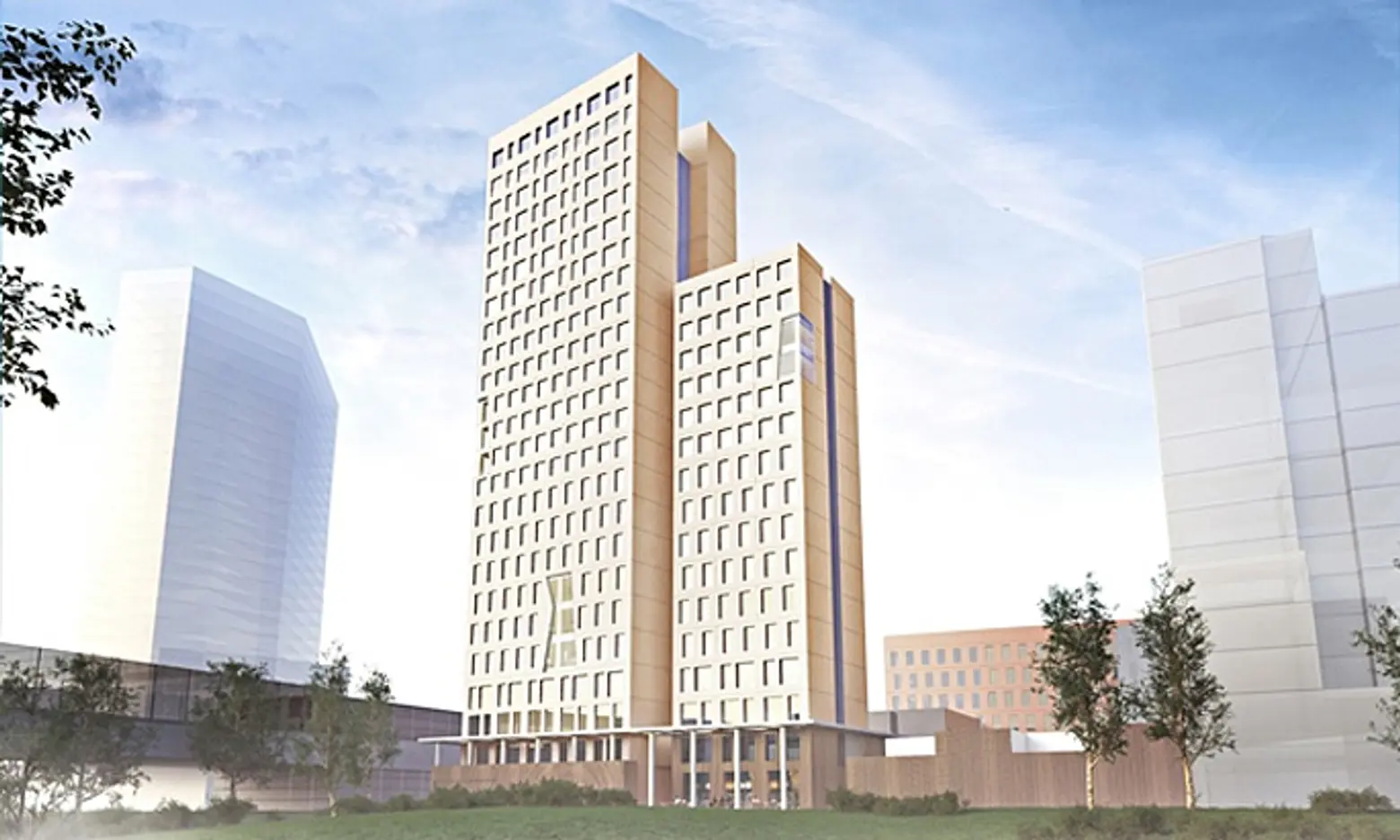 In March 2015, a 276-foot wooden skyscraper was proposed for Vienna’s Seestadt Aspern area
In March 2015, a 276-foot wooden skyscraper was proposed for Vienna’s Seestadt Aspern area
How safe are wood constructions?
Joseph: Structurally speaking, wood construction is just as safe as any other construction type when it is designed and implemented correctly. There are a lot of checks and balances in the design and construction process that are currently utilized in tall steel and concrete structures that help insure these buildings are designed and constructed correctly. I don’t see it as a major hurdle, but we will need to make sure that similar checks and balances are in place for tall wood construction as well.
Without a doubt, fire safety is probably the largest hurdle for tall wood construction at the moment. Historically, there are have been cases where fires have devastated cities that were primarily constructed from wood and as a result building codes have placed some fairly limiting height restrictions on wood construction. However, what we have to remember is that when we talk about tall wood buildings, we aren’t talking about small members that burn like kindling, we’re talking about substantially sized wood members that behave more like large logs in a fire, where the outside chars, but doesn’t burn all of the way through.
Through testing, we’ve discovered that wood actually chars and burns fairly predictably and what we’re able to do is build in a sacrificial layer of wood into our design that we don’t count on, knowing that it will be charred in a fire event, but the primary core of the member will be preserved. Similar to steel and concrete, we are also able to put protective layers over the wood to augment its fire performance. Right now, we’re at a point where the testing is showing we can design tall wood structures in a way such that the fire resistance is comparable to that of similar steel and concrete structures.
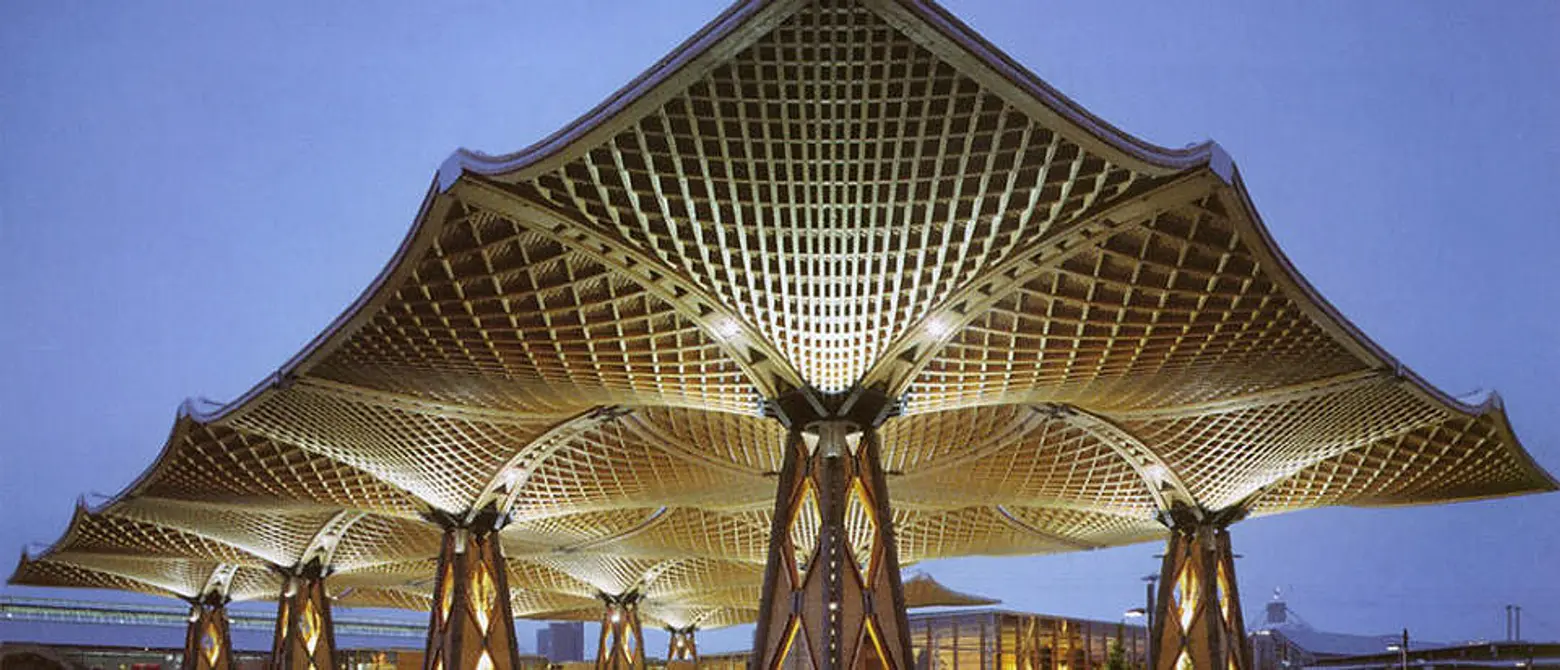 The world’s largest self-supporting wooden roof stands at the Hanover, Germany fairground and was built for EXPO 2000. The structure uses engineered timer
The world’s largest self-supporting wooden roof stands at the Hanover, Germany fairground and was built for EXPO 2000. The structure uses engineered timer
In addition to fire concerns, wood has some unique characteristics that also bring about some unique safety concerns. All materials are susceptible to issues with moisture infiltration, but wood is perhaps more so than most other materials. There are also concerns with mold and bugs that have been brought up, but for the most part all of these issues can be addressed by proper waterproofing, detailing, and manufacturing processes. When working with tall wood buildings, it will be very important to limit the exposure of the wood structural members during construction. This will be especially important in environments like New York where there are humid summers and harsh winters, as extended exposure to the elements can damage wood structural materials. This can be resolved by more rapidly enclosing the structure and by careful attention to construction sequencing.
What are some of the benefits of building with wood?
Joseph: Right now the studies that have been done aren’t showing significant economic advantages, but are showing that the economics are comparable. Financially, the benefits will come from an increased speed of construction and the potential to reduce foundation sizes. As the design and construction communities become more familiar with tall wood buildings, there is the opportunity that prices could come down and become more enticing to developers.
The environmental impacts are the major benefit that come with wood construction. It’s a naturally renewable material that also stores carbon within the material. There have been a lot of studies comparing the environmental impact of wood compared to concrete or steel and it performs significantly better over its life cycle.
There are some side benefits to wood that have also been studied that include such things as increased thermal protection, energy performance, and even an increase in the happiness of occupants because of wood’s visual characteristics.
Many of these buildings use “engineered timber” – what exactly is that? Are there concerns regarding deforestation?
Joseph: “Engineered timber” or “engineered wood” is a general term that includes a variety of different wood products that are manufactured rather than milled from trees. There are a variety of products with different intended uses within this category, but they all primarily consist of a combination of high strength adhesives and smaller pieces of wood that are bonded together to make a much larger and stronger wood member.
The bonding and manufacturing process takes place in a controlled environment that allows much stronger members to be created than what can be achieved by a standard piece of sawn lumber. Engineered wood products typically consist of either a thin sheet called a veneer or wood strips called strands, but in the case of wood high-rise applications full-size lumber is being bonded in multiple layers to create Cross Laminated Timber (CLT) and Glulam columns. Engineered wood products have been around for a long time in the form of plywood and glulam beams, but CLT is the most recent addition to the lineup that allows the higher strength engineered wood products to be used in floor and wall applications.
Engineered wood products were actually created as a solution to deforestation rather than a cause of it. Deforestation has eliminated much of the old growth wood that allowed buildings to be constructed with large wood beams milled from trees. Engineered wood products use small members or even byproducts of the wood manufacturing process to create larger members that are stronger than the large wood beams of the past. Wood is a naturally replenishing material and I don’t think we’ll get to a point where the smaller pieces of wood used in engineered wood products are a significant contributor to deforestation. Wood is a naturally renewable resource and with responsible forest management we should be able to avoid deforestation problems.
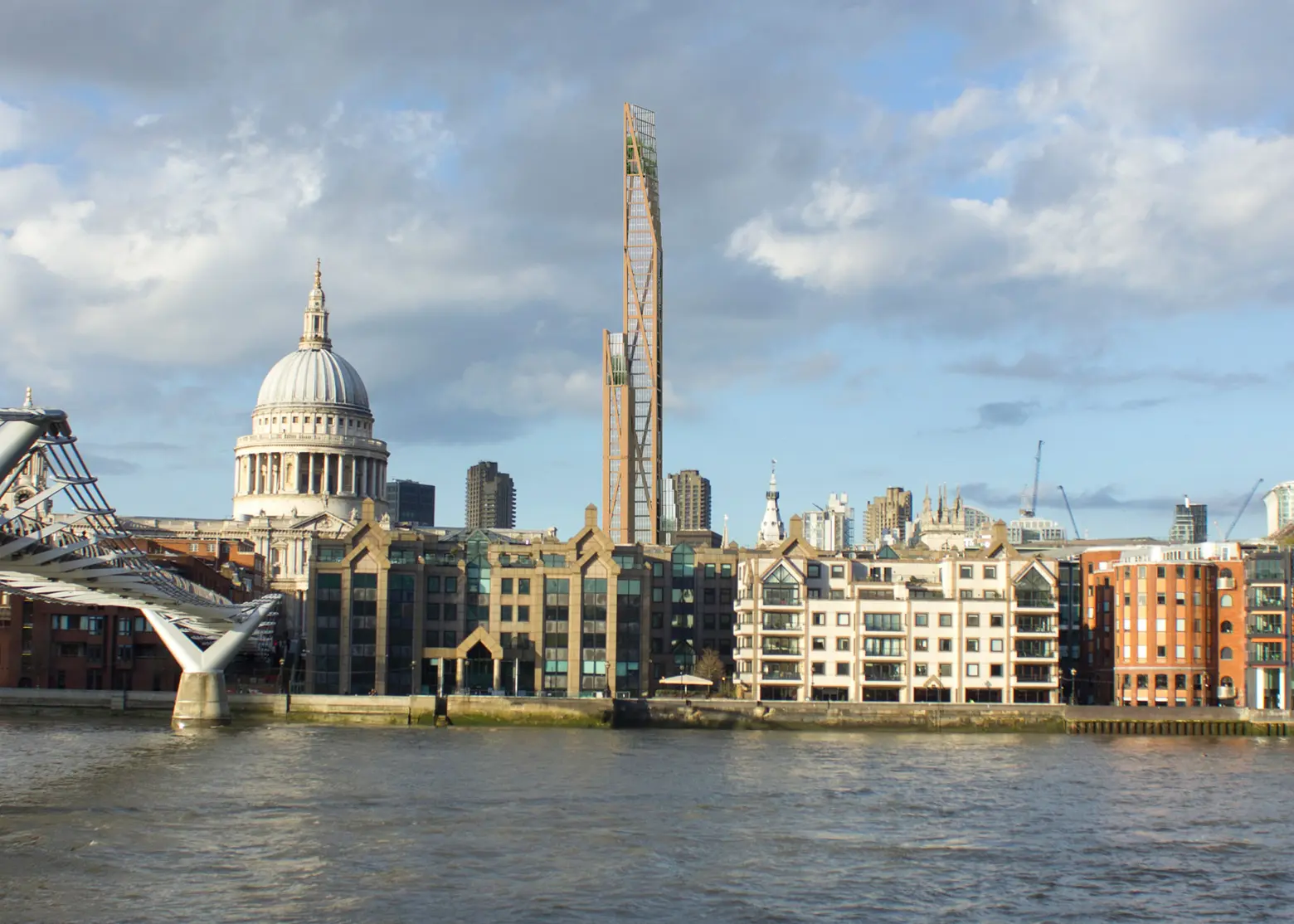 PLP Architecture’s 1,000-foot proposal for London’s first wooden skyscraper
PLP Architecture’s 1,000-foot proposal for London’s first wooden skyscraper
Towers keep getting taller and taller, how high can you build with wood right now? And how realistic is a 1,000-plus-foot wood supertall like the one being proposed for London?
Joseph: Right now in the United States the codes haven’t quite evolved to catch up with where we’re at with our technology and materials, so there are some prescriptive code requirements that restrict wood construction to five stories or less. This is primarily driven by the fire rating concerns and we will see some loosening of these requirements in the next edition of the International Building Code. But we still won’t be at a point here in the United States where we’re seeing tall wood buildings become a reality. Where you’re really starting to see taller wood buildings incorporated on a broader scale is in Europe and Canada, where there has been a stronger push for them. There are always alternative methods to prove equivalency and circumvent the code requirements here in the United States, but this usually involves a testing and approvals process which can be time consuming and expensive.
If we ignore code limitations and just look at wood as a structural material, it is not as strong as steel or concrete, but it is quite a bit lighter. So when we start to look at its strength to weight ratio, it is on par with concretes that we are seeing used in 40-story buildings, so I’d say that is around the practical limit we should expect from tall buildings constructed entirely with wood at the moment.
In the case of the 1,000-foot-tall wood tower concept put forth in London, they’ve added a secondary structural system to the outside of the building known as an exoskeleton that can push the boundaries of those limits, but that is something that also effects the architectural design of the building. As we start to get into taller and more slender structures, noticeable wind movement becomes a significant design concern. And one thing that helps reduce this is a heavier building. So as we go taller with a lighter wood system, wind movement will become a more prevalent issue. We are currently solving this on our tall, slender structures in a number of ways, including adding dampers to counteract the wind movements. Adding dampers to wood structures may need to be applied at lower building heights than a steel or concrete structure would require.
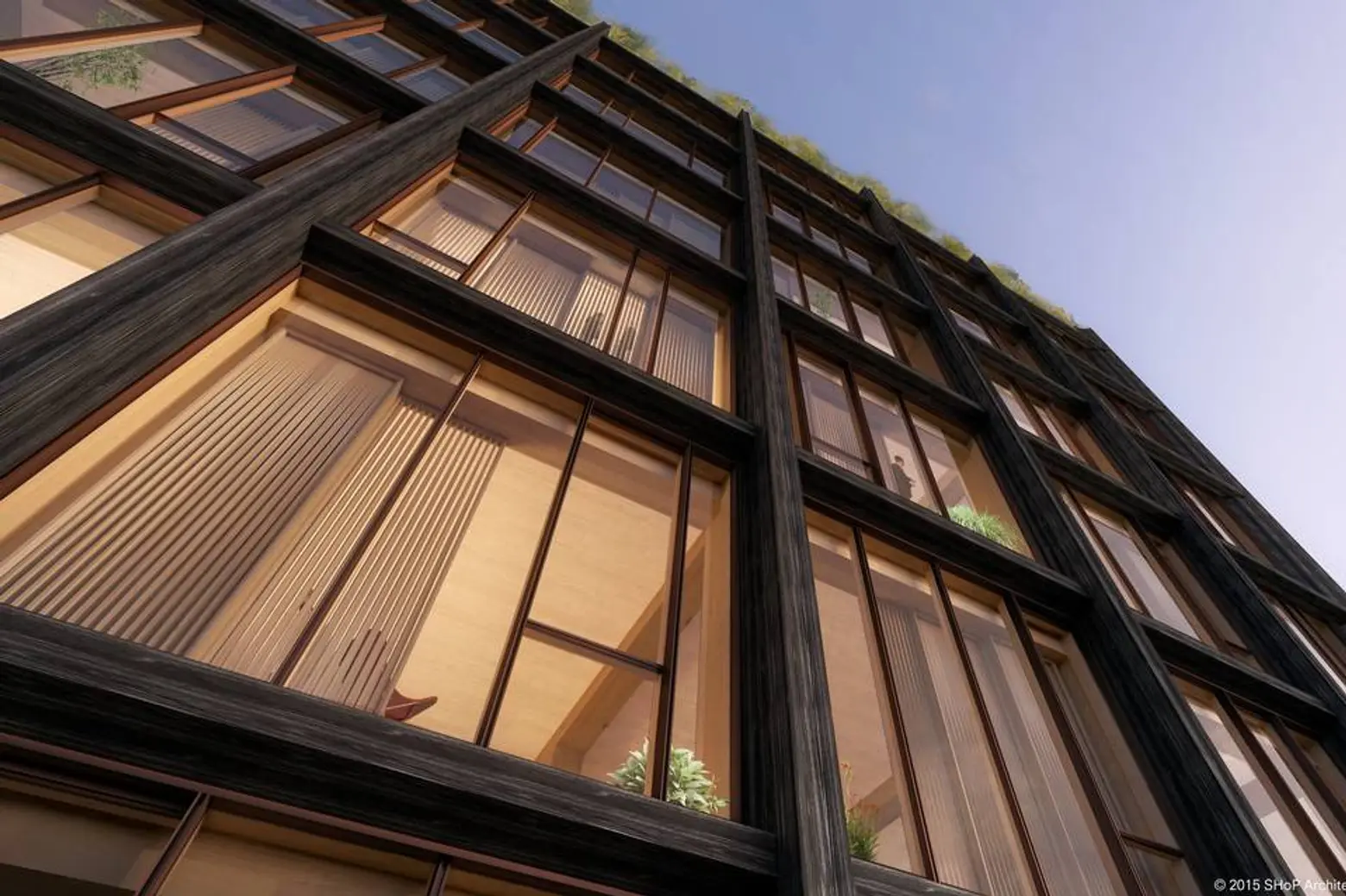 SHoP Architects will bring a 120-foot wood condo to 475 West 18th Street in Chelsea
SHoP Architects will bring a 120-foot wood condo to 475 West 18th Street in Chelsea
I think the future of tall wood structures—where we’re really pushing the height limits—will rely on a combination of steel, concrete and wood, rather than solely on wood for the structural systems. We’re seeing this in British Columbia right now, where an 18-story wood structure is currently under construction using concrete in the core, wood for the columns and floors, and steel for making connections. By combining all three materials where they are most efficient there is no reason we can’t create structures just as tall as we are doing today.
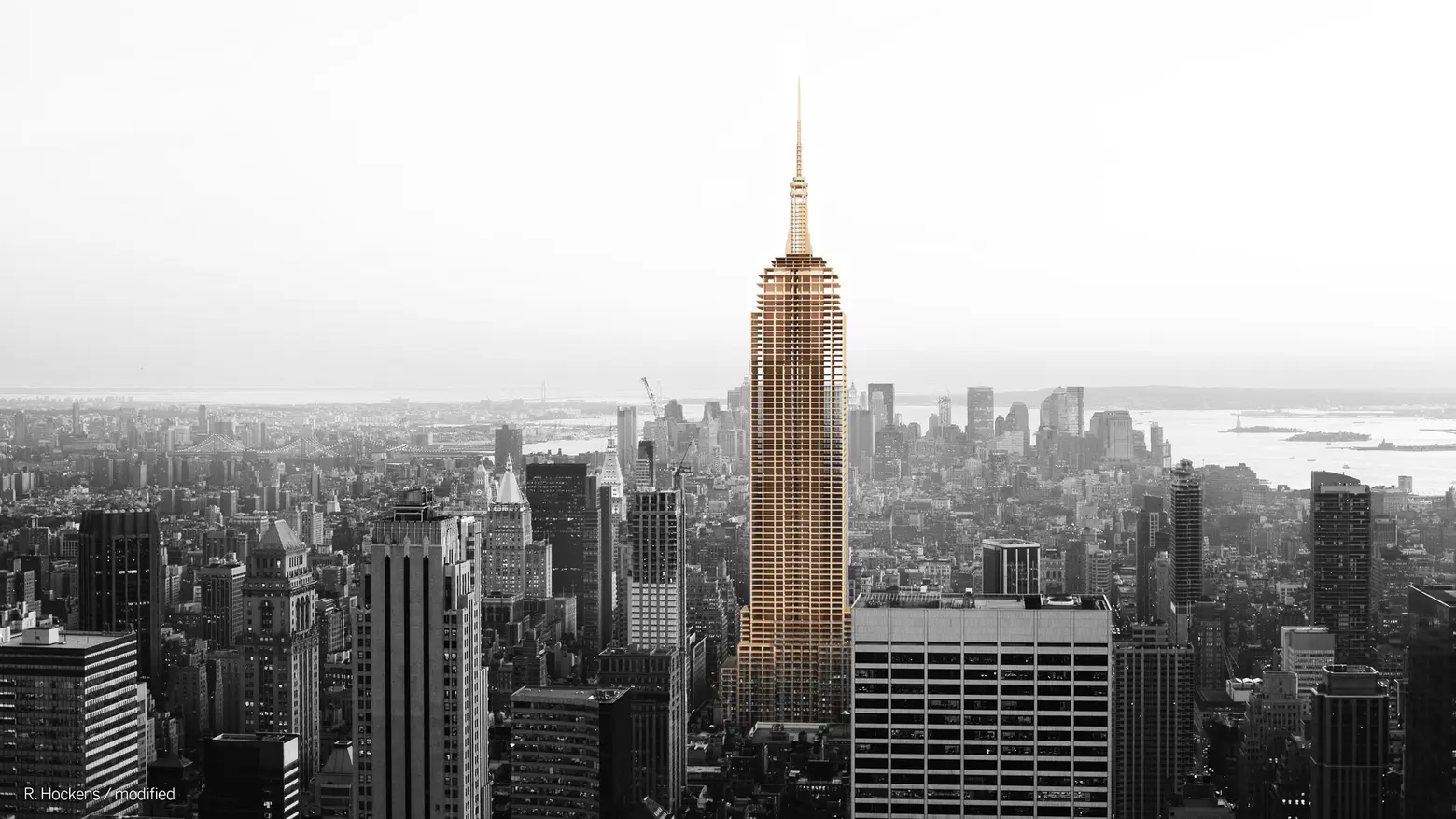 Architect Michael Green has teamed up with Finnish forestry company Metsä Wood and Equilibrium Consulting to redesign the Empire State Building with wood as the main material.
Architect Michael Green has teamed up with Finnish forestry company Metsä Wood and Equilibrium Consulting to redesign the Empire State Building with wood as the main material.
Do you think wood skyscrapers will ever catch on in New York City? What needs to happen?
Joseph: I think its definitely possible to envision a future where wood or hybrid-wood skyscrapers are being built in New York City, but there are still a lot of pieces that need to fall into place first.
From a material and engineering standpoint I feel like we have the tools in place to make wood skyscrapers a reality. For taller wood buildings to become a reality, there are several things that need to happen. Most importantly, the codes need to evolve to a point where they explicitly allow this type of construction and the ground rules are clearly defined. We’re going to start to see some of this in the newest edition of the International Building Code, but there is still work to do.
The other major thing that needs to happen, is that the economics need to be in place. There have been some studies done that are showing a tall wood building can be constructed at a similar price point to steel and concrete structures, but I think the market is going to be hesitant to abandon the tried and true practice of steel and concrete on a large scale unless there is a financial incentive. As the technology matures and designers and builders become more familiar with the materials and building techniques, the price point should come down, but we’ll have to see if it gets to the point where it can be a financially preferable option to steel or concrete.
RELATED:
